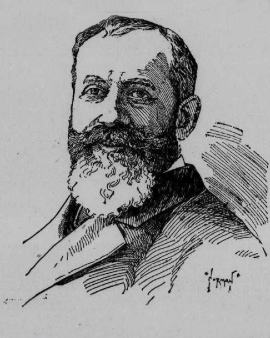


Jean Francois Raffaelli was a French painter, sculptor, printer and actor, in other words a multi-talented artist. He was born in Paris in 1850, his grandparents originally came from Tuscany. At first Jean Francois Raffaelli was more interested in music and theater and he was also active in these fields. But at the age of 20 he began to take up painting and sculpture. He was largely self-taught, and for only three months was a pupil of the history painter and sculptor Jean Leon Gerome, who taught at the Ecole Beaux-Arts de Paris. Very soon he exhibited his first picture at the Salon de Paris. Among the artist's favourite subjects, apart from his landscapes, were scenes from the everyday life of the Parisian suburbs, everything that happened on the city streets on a daily basis. But he also painted portraits of well-known Parisian personalities, including, for example, the politician Georges Clemenceau. At the same time, he also created a number of sculptures. However, most of them are no longer extant, there are only photographs of them. Also copper engravings of famous Parisian places belonged to his works. Later he also worked very intensively with silkscreen and other coloured printing techniques.
The Impressionist painter Edgar Degas, whom Raffaelli had met through the Ecole Beaux Arts Paris, offered him the opportunity to join the new group of Impressionists, which organized eight art exhibitions between 1874 and 1886, and to which Monet belonged, among others. Degas, who was in charge of organizing the exhibitions, wanted to expand them by making them accessible to realist painters such as Raffaelli. But this divided the Impressionist group considerably and it broke up after much squabbling.
In later life, Jean Francois Raffaelli received various honors. For example, in the year In 1889, he was awarded the French Order of the Legion of Honor. At the Olympic Games in Stockholm in 1912, art competitions became part of the Olympic program for the first time. This included a painting competition in which the artist took an honourable fourth place. When Raffaelli died in Paris in 1924, a street in Paris was named after him Rue Raffaelli. The artist never married and left no descendants.

Jean Francois Raffaelli was a French painter, sculptor, printer and actor, in other words a multi-talented artist. He was born in Paris in 1850, his grandparents originally came from Tuscany. At first Jean Francois Raffaelli was more interested in music and theater and he was also active in these fields. But at the age of 20 he began to take up painting and sculpture. He was largely self-taught, and for only three months was a pupil of the history painter and sculptor Jean Leon Gerome, who taught at the Ecole Beaux-Arts de Paris. Very soon he exhibited his first picture at the Salon de Paris. Among the artist's favourite subjects, apart from his landscapes, were scenes from the everyday life of the Parisian suburbs, everything that happened on the city streets on a daily basis. But he also painted portraits of well-known Parisian personalities, including, for example, the politician Georges Clemenceau. At the same time, he also created a number of sculptures. However, most of them are no longer extant, there are only photographs of them. Also copper engravings of famous Parisian places belonged to his works. Later he also worked very intensively with silkscreen and other coloured printing techniques.
The Impressionist painter Edgar Degas, whom Raffaelli had met through the Ecole Beaux Arts Paris, offered him the opportunity to join the new group of Impressionists, which organized eight art exhibitions between 1874 and 1886, and to which Monet belonged, among others. Degas, who was in charge of organizing the exhibitions, wanted to expand them by making them accessible to realist painters such as Raffaelli. But this divided the Impressionist group considerably and it broke up after much squabbling.
In later life, Jean Francois Raffaelli received various honors. For example, in the year In 1889, he was awarded the French Order of the Legion of Honor. At the Olympic Games in Stockholm in 1912, art competitions became part of the Olympic program for the first time. This included a painting competition in which the artist took an honourable fourth place. When Raffaelli died in Paris in 1924, a street in Paris was named after him Rue Raffaelli. The artist never married and left no descendants.
Page 1 / 1






